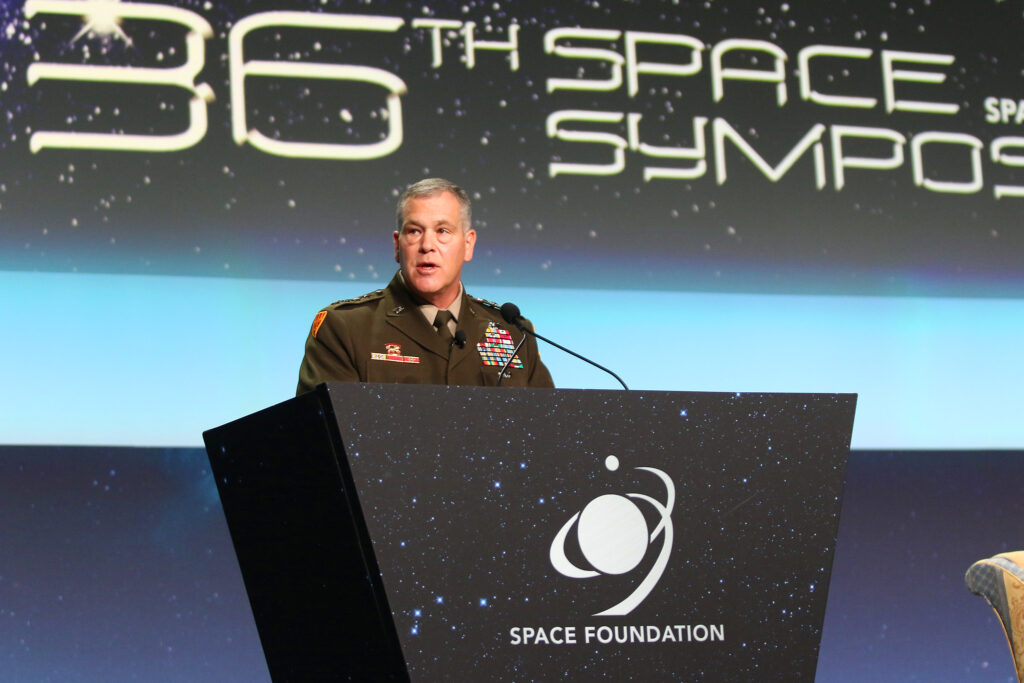THERESA HITCHENS

COLORADO SPRINGS: US Space Command will soon issue a strategy document that outlines the “roadmap” for achieving “space superiority,” says Gen. Jim Dickinson, SPACECOM commander.
The new strategy will build on his “Commander’s Vision” released in January, but “now more informed. … It will strengthen our ability to outthink and out maneuver our competitors and dominate through space combat power, and it will always ensure that there will never be a day without space,” he told the Space Foundation’s annual Space Symposium here today.
“It describes how, in coordination with allies and partners, US Space Command will achieve and maintain space superiority, when, where, and for how long we need it. It will lay out how we will accomplish what’s necessary for space superiority, to include efforts to counter competitor influence, build and maintain competitive advantages, strengthen our critical relationships and attract new partners,” Dickinson explained.
The strategy also “will outline what’s necessary to retain unfettered access to, and freedom to operate in, and from and through space — exactly the space superiority needed to get after the Interim Strategic Guidance imperative to, quote, ‘amplify our power and our ability to disrupt threats before they can reach our shores,’ or in our case, on orbit.”
Dickinson did not, however, address what weapon systems SPACECOM might have at its disposal to achieve these goals — including any currently hiding under a highly classified Special Access Program.
The Biden White House published its interim national security guidance in March, in essence as a place holder for a revised National Security Strategy. That guidance focused heavily on the growing strategic challenges posed by Russia and a more “assertive” China.
Dickinson said the new SPACECOM strategy “will put us firmly on the road” to full operational capability — following his declaration that the command had achieved initial operational capability, or IOC.
IOC, he explained, is usually defined as the first time a weapon or a piece of equipment can be employed effectively by adequately trained personnel, but in the case of an institution the meaning is slightly different.
“That is a tactically focused definition, and it makes perfect sense for weapon systems procurement, but it makes less sense as a definition for the institutional IOC we have reached in US Space Command,” he said. For SPACECOM, he explained, IOC is “more strategically focused,” meaning that the two-year-old command can now provide combat “effects” in any conflict.
“It’s about posturing for the current strategic environment … in the context of our deterrence objectives, and our protect, and defend mission,” he added.
No comments:
Post a Comment